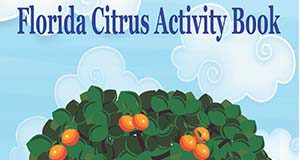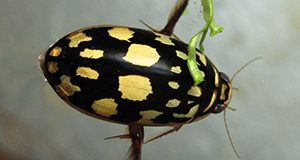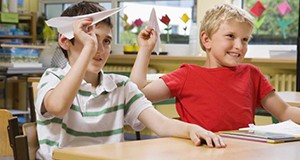The Florida 4-H Poultry BBQ program has existed for years, and the program for red meat cookery has been a huge success in Tennessee 4-H. With sponsorship for the winners at the state level, the Florida 4-H Tailgate Contest program will be a success in Florida as well. This program will strive to promote enjoyable outdoor cooking experiences, encourage the incorporation of animal protein in the diet in order to combat childhood obesity, improve youth nutritional knowledge and cooking skills, and impart knowledge about safe handling and proper degree of doneness to produce safe and delicious meat dishes. This 2-page fact sheet is the fifth publication in the Florida 4-H Tailgate series, and it discusses meat selection. Written by Chad Carr, Brian Estevez, Sonja Crawford, Jason Scheffler, George Baker, Ed Jennings, and Mark Mauldin, and published by the 4-H Youth Development Department, December 2016.
http://edis.ifas.ufl.edu/4h376
Category: 4-H Youth Development
Florida 4-H Tailgate: Cooking Safety
The Florida 4-H Poultry BBQ program has existed for years, and the program for red meat cookery has been a huge success in Tennessee 4-H. With sponsorship for the winners at the state level, the Florida 4-H Tailgate Contest program will be a success in Florida as well. This program will strive to promote enjoyable outdoor cooking experiences, encourage the incorporation of animal protein in the diet in order to combat childhood obesity, improve youth nutritional knowledge and cooking skills, and impart knowledge about safe handling and proper degree of doneness to produce safe and delicious meat dishes. This 3-page fact sheet is the second publication in the Florida 4-H Tailgate series, and it addresses cooking safety. Written by Chad Carr, Brian Estevez, Sonja Crawford, Jason Scheffler, George Baker, Ed Jennings, and Mark Mauldin, and published by the 4-H Youth Development Department, December 2016.
http://edis.ifas.ufl.edu/4h373
Florida 4-H Tailgate: Cooking Equipment
The Florida 4-H Poultry BBQ program has existed for years, and the program for red meat cookery has been a huge success in Tennessee 4-H. With sponsorship for the winners at the state level, the Florida 4-H Tailgate Contest program will be a success in Florida as well. This program will strive to promote enjoyable outdoor cooking experiences, encourage the incorporation of animal protein in the diet in order to combat childhood obesity, improve youth nutritional knowledge and cooking skills, and impart knowledge about safe handling and proper degree of doneness to produce safe and delicious meat dishes. This 2-page fact sheet is the first publication in the Florida 4-H Tailgate series, and it discusses cooking equipment. Written by Chad Carr, Brian Estevez, Sonja Crawford, Jason Scheffler, George Baker, Ed Jennings, and Mark Mauldin, and published by the 4-H Youth Development Department, July 2016.
http://edis.ifas.ufl.edu/4h372
Florida Citrus Activity Book
The Florida Citrus Activity Book is a basic introduction to Florida citrus trees, diseases, and pests. This 20-page booklet is for elementary students. Written by J.D. Burrow, M.M. Dewdney, M.E. Rogers, and T. Vashisth and published by the Plant Pathology Department.
http://edis.ifas.ufl.edu/pp331
Predaceous Diving Beetles as Pets and the Self-Cleaning Aquarium
Meet a new, attractive, easy-to-keep, local, non-endangered, aquatic pet: the diving beetle! Predaceous diving beetles are aesthetically pleasing yet still rare in US aquariums (though common in countries like Japan), which makes them a fun, new, unusual pet. This 5-page fact sheet written by Craig Bateman and Jiri Hulcr and published by the School of Forest Resources and Conservation provides information about the aquatic beetles, including how to catch and maintain them. Learn how you can befriend these sprightly little insect pals and allow them to bring to your home a mysterious green and quiet world, beautiful silver air bubbles and bronze iridescence, and exciting shows of feeding frenzy. And if you have to part with them, you can safely release the native species into the wild, because they are a part of our Florida natural landscape.
edis.ifas.ufl.edu/fr398
Principles and Practices to Secure and Hold Interest

Securing and holding student interest is a major challenge for teachers. Once the curriculum is set, then teachers must decide how to teach the content, particularly how to build lasting interest in the content being taught. Students learn more and retain what they have learned longer when they are interested in the content, see its usefulness, and are motivated to learn and apply what they have learned. This three-page fact sheet discusses what makes a topic or lecture interesting for students and ways to improve teaching methods to keep students engaged and interested in the subject matter. Written by R. Kirby Barrick and Andrew C. Thoron, and published by the Agricultural Education and Communication Department.
http://edis.ifas.ufl.edu/wc242
Principles of Teaching and Learning

Effective teaching involves careful consideration and planning. There are several different principles that can be used to guide teachers in planning their lessons. This two-page fact sheet provides information on how to organize and structure subject matter, motivate students, effectively use reward and reinforcement, and other techniques for instruction. Written by R. Kirby Barrick and Andrew C. Thoron, and published by the Agricultural Education and Communication Department.
http://edis.ifas.ufl.edu/wc243
Teaching Behavior and Student Achievement

Student achievement can clearly be enhanced through effective teaching behaviors, but what kinds of teacher behaviors lead to higher achievement among learners? This six-page fact sheet describes five different teacher behaviors that can lead to higher student achievement. These behaviors are clarity, variability, Enthusiasm, task oriented and/or businesslike behavior, and student opportunity to learn criterion material. Written by R. Kirby Barrick and Andrew C. Thoron, and published by the Agricultural Education and Communication Department.
http://edis.ifas.ufl.edu/wc244
Teaching Students with Disabilities: Autism Spectrum Disorder and Asperger's Syndrome
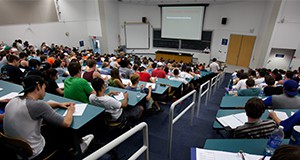
Teachers of all subjects must familiarize themselves with the specific needs of the students in their classrooms, especially in the case of students with autism spectrum disorders (ASD) and Asperger’s syndrome because students may vary greatly in the degree to which they are affected by these disabilities. This four-page fact sheet explains the differences between autism and Asperger’s syndrome and how instructors can modify their lessons to effectively meet the needs of learners with these disabilities in different types of learning environments and achieve greater classroom success for the educator and the learner. Written by Sara E. LaRose and Andrew C. Thoron, and published by the Agricultural Education and Communication Department.
http://edis.ifas.ufl.edu/wc240
Volunteer Training Series: Recognizing Young People
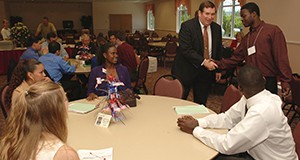 Developing a sense of belonging is one of the Essential Elements of a positive youth development experience. Creating an inclusive environment in your 4-H club programs and activities can help you achieve this goal. Providing many forms of recognition for all, not just for those who excel in competition with other youth, also supports this sense of belonging. This 5-page fact sheet discusses recognition of participation, progress toward goals, standards of excellence, peer competition, and cooperation in the context of 4-H Clubs. Written by Georgene Bender, Tracy Tesdall, and Judith Levings, and published by the UF Department of 4-H Youth Development, November 2015.
Developing a sense of belonging is one of the Essential Elements of a positive youth development experience. Creating an inclusive environment in your 4-H club programs and activities can help you achieve this goal. Providing many forms of recognition for all, not just for those who excel in competition with other youth, also supports this sense of belonging. This 5-page fact sheet discusses recognition of participation, progress toward goals, standards of excellence, peer competition, and cooperation in the context of 4-H Clubs. Written by Georgene Bender, Tracy Tesdall, and Judith Levings, and published by the UF Department of 4-H Youth Development, November 2015.
http://edis.ifas.ufl.edu/4h370
Risk Management for 4-H Youth Development Work: Large Animals: Livestock
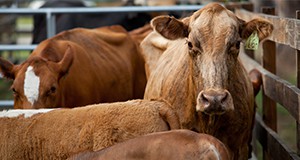 Most people involved in youth livestock exhibition are familiar with the physical risks of handling and transporting livestock, but public spectators generally need more instruction and supervision to ensure their safety and health. The Risk Management for 4-H Youth Development Work series aims to provide UF/IFAS Extension county faculty, staff, volunteers, and youth with the knowledge they need to implement best practices in risk management strategies. This 8-page fact sheet covers risks in the following categories: injuries to people, injuries to animals, property damage, biosecurity (diseases transmitted to humans and between animals), and general precautions. Written by Chad Carr, Saundra TenBroeck, Wendy DeVito, Chris Strong, Dale Pracht, and Georgene Bender, and published by the UF Department of Animal Sciences, November 2015.
Most people involved in youth livestock exhibition are familiar with the physical risks of handling and transporting livestock, but public spectators generally need more instruction and supervision to ensure their safety and health. The Risk Management for 4-H Youth Development Work series aims to provide UF/IFAS Extension county faculty, staff, volunteers, and youth with the knowledge they need to implement best practices in risk management strategies. This 8-page fact sheet covers risks in the following categories: injuries to people, injuries to animals, property damage, biosecurity (diseases transmitted to humans and between animals), and general precautions. Written by Chad Carr, Saundra TenBroeck, Wendy DeVito, Chris Strong, Dale Pracht, and Georgene Bender, and published by the UF Department of Animal Sciences, November 2015.
http://edis.ifas.ufl.edu/an321
The Social Organization of Honey Bees

A honey bee colony is a superorganism, which means that together its members function like a single animal. Bees within a colony work together like the cells in a human body. They warm the colony in the winter by vibrating their wings to generate heat and cool it in the summer by ferrying in droplets of water and fanning air over them. Worker bees fan air into and out of the colony entrance in distinct inhalations and exhalations. Colonies reproduce by swarming to create new daughter colonies that in turn thermoregulate, breathe, and reproduce just as a single autonomous animal does. In three pages this fact sheet explains the intricate caste system and age-based division of labor that allows colonies of humankind’s best-loved pollinators to function and thrive. Written by Ashley N. Mortensen, Bryan Smith, and James D. Ellis and published by the Entomology and Nematology Department.
http://edis.ifas.ufl.edu/in1102
Eggcellent Adventures in Classroom Embryology
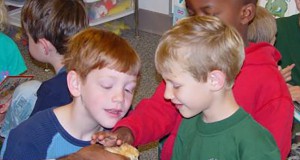
Eggcellent Adventures in Classroom Embryology is about learning through experience. In most cases, when a teacher signs up to teach chicken embryology in the classroom, the teacher sets up the incubator and the teacher and class wait for the eggs to hatch. That is the experience. But the daily plan of lessons in this guide make the chicken embryology experience an intracurricular experience. Through a series of activities, students can see firsthand how a chicken develops in an egg. Students will candle eggs to observe chick development, record data, make predictions, and conclude what they think the final outcome will be. The lessons in the guide follow Florida Sunshine State Standards and each contains an experience, instructions, background information, and reflection questions. The 31 lessons address math, language arts, and visual arts in addition to agricultural literacy and science concepts. Written by Shaina Bennett and Judy Levings and published by the 4-H Youth Development Program, October 2015.
http://edis.ifas.ufl.edu/4h368
Getting the Most out of Social Media

Agriculturalists can use social media as a powerful tool for marketing their products and establishing a brand identity. The goal of this series is to help agriculturalists understand how social media can work for them. The series also discusses the various social media platforms and how to use social media strategically and wisely. Written by Jessica C. Fernandez and Joy N. Rumble, and published by the UF Department of Agricultural Education and Communication, August 2015. (Photo credit: tanuha2001/iStock/Thinkstock.com)
http://edis.ifas.ufl.edu/topic_series_getting_the_most_out_of_social_media
A Manual for the Design and Implementation of Teaching and Demonstration Gardens

Teaching and demonstration gardens are places where the public can learn about different types of gardens and landscapes. This 10-page fact sheet discusses the various types of gardens, how to plan and develop a demonstration garden, logistical and design considerations, and educational programming. Written by Gail Hansen, and published by the UF Environmental Horticulture Department, July 2015.
http://edis.ifas.ufl.edu/ep524
Positive Discipline: Behavioral Management Skills for Parents and Teachers, Part 3: Fostering the Parent-Child and Teacher-Student Relationship to Build Responsibility
Tell me and I forget,
Teach me and I may remember,
Involve me and I learn.
The general goal of healthy parenting and teaching is to produce children and students who can think critically, make good decisions, and become independent, accountable, responsible, and contributing members of society. Part 3 of this Positive Discipline: Behavioral Management Skills for Parents and Teachers series covers tips and strategies to help parents and teachers build critical thinking and positive behavioral skills in children. Several of these strategies that can help parents and teachers achieve these goals through “love and logic” are discussed in this 6-page fact sheet written by Victor Harris, Whitney Fung, Sarah Ellis, and Alison Schmeer, and published by the UF Department of Family Youth and Community Sciences, July 2015. (Photo Credit: Thinkstock.com/iStock/natasaadzic)
http://edis.ifas.ufl.edu/fy1460
Positive Discipline: Behavioral Management Skills for Parents and Teachers, Part 2: General Approaches to Managing Behavior
When a child is locked in the bathroom
With water running
And he says he is doing nothing
But the dog is barking,
Call 911.
–Erma Bombeck
Research indicates that there must be at least an 8-to-1 positive-to-negative interaction ratio for parents and teachers to have a positive relationship with their children and students. Put simply, both verbal and non-verbal communication needs to be generally positive. Learning how to steer a child or a student toward managing his or her own behavior in healthy ways requires both knowledge and skills that make it easy to have positive interactions and behavior change. This 6-page fact sheet will help you identify specific approaches to successfully managing appropriate and inappropriate behavior at home and in the classroom. It outlines four principles of behavior management, and describes several strategies before providing a practice activity. Written by Victor Harris, Whitney Fung, Sarah Ellis, and Alison Schmeer, and published by the UF Department of Family Youth and Community Sciences, July 2015. (Photo Credit: Thinkstock.com/Jupiterimages/Creatas Images)
http://edis.ifas.ufl.edu/fy1459
Positive Discipline: Behavioral Management Skills for Parents and Teachers, Part 1: Types of Misbehaviors and Keys to Success
“Before I got married I had six theories about bringing up children; now I have six children, and no theories.” — John Wilmot
Parents and teachers often experience a lot of insecurities, especially with regard to helping children manage their own behaviors. Not surprisingly, there are many similarities in the skills that effective parents and teachers use to help children manage their own behavior successfully. Building a foundation for healthy and effective parenting and teaching begins with understanding some different types of misbehaviors. This 4-page fact sheet discusses four common types of misbehaviors, encourages the reader to identify healthy and unhealthy practices, and continues with key factors of effective parenting and teaching. Written by Victor Harris, Whitney Fung, Sarah Ellis, and Alison Schmeer, and published by the UF Department of Family Youth and Community Sciences, July 2015. (Photo credit: Thinkstock.com/iStock)
http://edis.ifas.ufl.edu/fy1458
Volunteer Training Series: 4-H Cloverbuds Program: 4-H for Younger Members
 Florida 4-H programs offered to children ages 5 to 7 are called 4-H Cloverbud programs and are a component of the Florida 4-H Youth Development Program. The goal of the Florida 4-H Cloverbud program is to offer age-appropriate, fun, and exploratory learning experiences for children in the 5 to 7 age group. This 5-page fact sheet describes the best management practices 4-H faculty and volunteers should use when teaching and interacting with this age group. Written by Amanda Squitieri and Sarah Hensley, and published by the UF Department of 4-H Youth Development, July 2015.
Florida 4-H programs offered to children ages 5 to 7 are called 4-H Cloverbud programs and are a component of the Florida 4-H Youth Development Program. The goal of the Florida 4-H Cloverbud program is to offer age-appropriate, fun, and exploratory learning experiences for children in the 5 to 7 age group. This 5-page fact sheet describes the best management practices 4-H faculty and volunteers should use when teaching and interacting with this age group. Written by Amanda Squitieri and Sarah Hensley, and published by the UF Department of 4-H Youth Development, July 2015.
http://edis.ifas.ufl.edu/4h369
Third Grade Manatee Curriculum
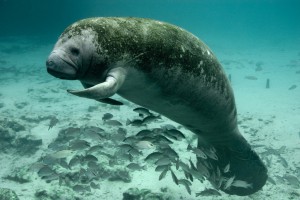
This 19 fact sheet curriculum series provides a series of individual lessons covering manatee biology and ecology, as well as highlighting some of the ways that humans impact and can protect manatees. The curriculum has been written at a third grade level but can be adapted for older or younger students. (Photo credit: Keith Ramos, USFWS)
http://edis.ifas.ufl.edu/topic_series_third_grade_manatee_workbook



